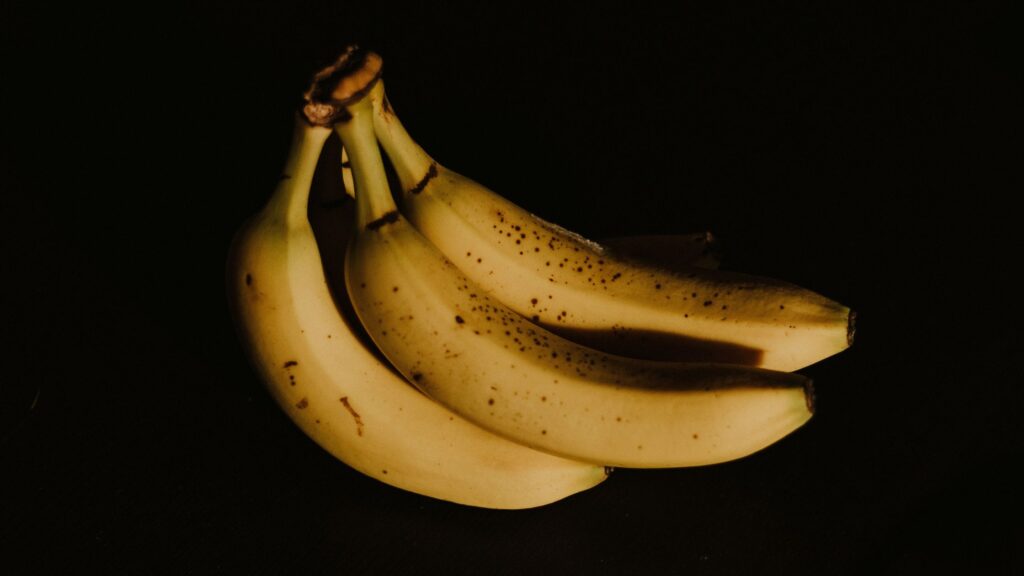Fruit ripening is one of the most crucial stages of a plant’s seasonal bearing cycle. It is also important for the farm industry to have ripened fruits for the consumers at the right time; otherwise, they may face losses. Now, fruits will eventually ripen on the trees, but it takes time and is not in synchronization with the productive schedules of harvesting seasons. And that’s why people employ calcium carbide, which rapidly increases the fruit ripening process, ultimately saving time and effort.
When employing calcium carbide for fruit ripening, there are a lot of controversies and debates around its usage. Firstly, there are the issues of side effects that can result from implementing calcium carbide. The second is the nutritional value of the ripened fruits and whether the substance can impact it in either direction. So, let’s look more into the science of calcium carbide and its usage in farming.
Detecting Calcium Carbide In Fruits
Everyone likes their fruits bulky and ripened—full of juices and healthy fibres. However, all this comes at a cost, especially in modern farming techniques. The fruits you eat are mostly cultivated using practices that can be harmful to your health. One such practice is using calcium carbide, which ripens the fruit upon reacting with water. It releases carbide and acetylene gas, which contributes to the ripening process.

3 characteristics of potential fruits ripened with Calcium carbide gas.
- Unnatural uniform color
- The skin may appear older or shrivelled.
- No smell or a faint chemical odor
Overview of CaC2
Calcium carbide is CaC2 and is produced by heating CaO or quicklime with Carbon at a very high temperature (2,200 °C). It finds applications in a wide variety of environments and industrial procedures. However, many people employ it for ripening fruits since it’s a cheap and easily obtainable alternative to plant hormones (Ethylene).

Some legal/illegal applications of CaC2
- Steelmaking.
- Chemical manufacturing.
- Slag conditioner.
- Fruit-ripening.
- Calcium Cyanamide.
Tests To Find Calcium Carbide In Fruits
It’s not an easy process to detect chemicals in fruits for normal people. However, there are some experiments that you can perform to test your fruits. This will give you some notion about the products you’re consuming and how safe they are for your health.
1. Water Test
You will find a layer of white powder coming off your fruit upon washing. This is probably calcium carbide, and you should not consume the fruit.
2. Smell Test
Calcium carbide emits an unpleasant odour of garlic. You can’t miss this smell as it’s uncomfortable. Also, if the smell persists after washing, then there’s a chance that your fruit has been ripened with CaC2.
3. Fast Ripening Of Fruit
If your fruit is ripened overnight, then it may be treated with CaC2.
4. Black Blotches
Prevent buying fruits with big black blotches on the surface. This is an indicator of the use of calcium carbide.
Note: Even though these tests can give you information about the fruit you’re consuming, you can’t trust them unquestioningly. Thus, it’s advisable to ask your local vendors about the fruits and vegetables.
Process Of Ripening Fruits With Calcium Carbide
The ripening is mostly used for climacteric fruits(harvested at maturity and can be ripened during transit)—bananas, apples, or mangoes. To send these fruits around the world, the trades usually pluck them before ripening. As a result, the ripening takes place during transportation since there is nothing wrong with natural ripening. However, to increase the ripening process, chemical agents come into the picture.
CaC₂ + 2H₂O → C₂H₂ (acetylene gas) + Ca(OH)₂
When the Calcium carbide reacts with moisture, it produces acetylene gas and slaked lime. The produced gas is responsible for the ripening as it is similar in action compared to the natural plant hormone (Ethylene). However, unlike ethylene, acetylene is harmful to both consumers since calcium carbide contains arsenic and phosphorus. Therefore, the whole ripening and colour changing of fruits comes at the cost of health for the consumers.
Why Do People Use Cac2?
The simple answer is availability and cost to the producers. The average cost of ethylene is 10x that of calcium carbide. Therefore, most people prefer using the latter option, but they’re naive to the harmful effects of the acetylene gas.

Benefits Of Using Calcium Carbide For Fruit Ripening
Keeping aside the harmful effects of calcium carbide for fruit ripening, let’s look at the perks of using acetylene gas. Remember, sellers make all these decisions, and they are liable for the collateral damages of using CaC2.
- Faster ripening process for market readiness.
- Cost-effectiveness for large-scale fruit sellers.
- Easier accessibility, handling and storage.
- Rapid action compared to natural methods.
The above are the benefits that neglect the adverse effects on human health. These points do not support the use of calcium carbide for acetylene gas in any shape, way or form. It only gives the idea about why people are still using such harmful compounds in their fruit ripening procedures. Also, let’s now discuss the posed safety concerns that come with carbide reaction with water.
Health Risks And Safety Concerns
As mentioned earlier, calcium carbide as a fruit ripener is not good for anyone. The compound serves plenty of other industrial applications, but fruit ripening is not the best one. First of all, the presence of arsenic and phosphorus is not only dangerous for consumers but also the sellers. The normal intake of such substances can cause a wide variety of human diseases—dizziness, frequent thirst, irritation, difficulty in swelling, weakness, vomiting, skin ulcer
- Potential toxic effects of arsenic and phosphorus impurities.
- Regulatory standards and legal limitations in different countries.
- Long-term health impacts of consuming carbide-ripened fruits.
The structure of calcium carbide is not feasible for human use. As a result, there is no way you can employ it for normal usage. Therefore, you should seek some other alternatives, like ethylene, which is safer for human interaction.
Safer Alternatives for Ripening Fruits
Plant hormones are a natural compound that helps in the proliferation of plants, seeds, fruits, and flowers. The five major plant hormone classes are auxins, cytokinins, gibberellins, ethylene, and abscisic acid. Out of these, the ethylene gas helps in fruit maturation and ripening, thus making it a better option for the same procedure. However, it’s much more costly and inaccessible to the normal planters, who then choose other cheaper alternatives.
- Ethylene gas treatment.
- Usage of ripening chambers.
- Natural ripening techniques and organic methods.
The alternative to calcium carbide comes at a cost that everyone should try to pay. Using harmful components in the food supply is a recipe for long-term human health risks. The one with the awareness should try to spread the message around their localities in order to provide quality products for everyone.
Final Thoughts Calcium Carbide For Fruit Ripening
Calcium carbide is a chemical used in fruit ripening, which increases the process by reacting with water. It is produced by heating CaO or quicklime with carbon at a high temperature and is used in various industries and industrial procedures. However, there are controversies surrounding its use, including potential side effects and the nutritional value of the ripened fruits.

Calcium carbide gas, produced by heating CaO or quicklime with carbon at a high temperature, can cause unnatural uniform colour, skin shrivelling, and no smell or chemical odour. It is also used in steelmaking, chemical manufacturing, slag conditioner, and fruit-ripening. Tests to detect calcium carbide in fruits include water tests, a garlic odour, fast ripening, and black blotches.
The Market Future
While calcium carbide offers benefits like faster market readiness, cost-effectiveness, easier accessibility, handling, and storage, it also has potential health risks and safety concerns. Finally, alternatives like ethylene gas, natural hormones, and organic methods are considered safer for fruit ripening. So, there is a hope that, over time, the fair use of safe compounds will be increased in the market.
FAQs
How do you detect calcium carbide in fruits?
The speculative way to detect fruits with calcium carbide is visual assessment. The fruits which are too good in shape might have traces of Cac2.
What is the formula for calcium carbide?
CaC2. It is also known as calcium acetylide.
What is calcium carbide?
It is a chemical compound that is resourceful in the production of acetylene and calcium cyanamide.
How is ethyne prepared from the calcium carbide equation?
Calcium Carbide reacts with water to form acetylene. This gas is used as a fuel or also for ripening fruits and vegetables.
What happens when calcium carbide is treated with water?
It gives two products: calcium hydroxide(slaked lime) and ethyne.
Which is the gas liberated when calcium carbide is added to water?
Acetylene gas is liberated when the calcium carbide is added to water.
What is the calcium carbide price in India?
Calcium carbide is priced between 70-80 Rupees per Kg as of May 2025.
How do you identify fruits ripened with calcium carbide formula?
There is a home-based experiment that you can use to detect artificially ripened fruits. It’s based on density as the ones ripened with calcium carbide will float in the water. However, it’s not fully legitimate, but it can give you an idea about the fruit you purchased.
What are calcium carbide water fruit ripening side effects?
The different side effects of ripening fruit with calcium carbide are difficulty in swallowing, thirst, vomiting, dizziness and fatigue.

